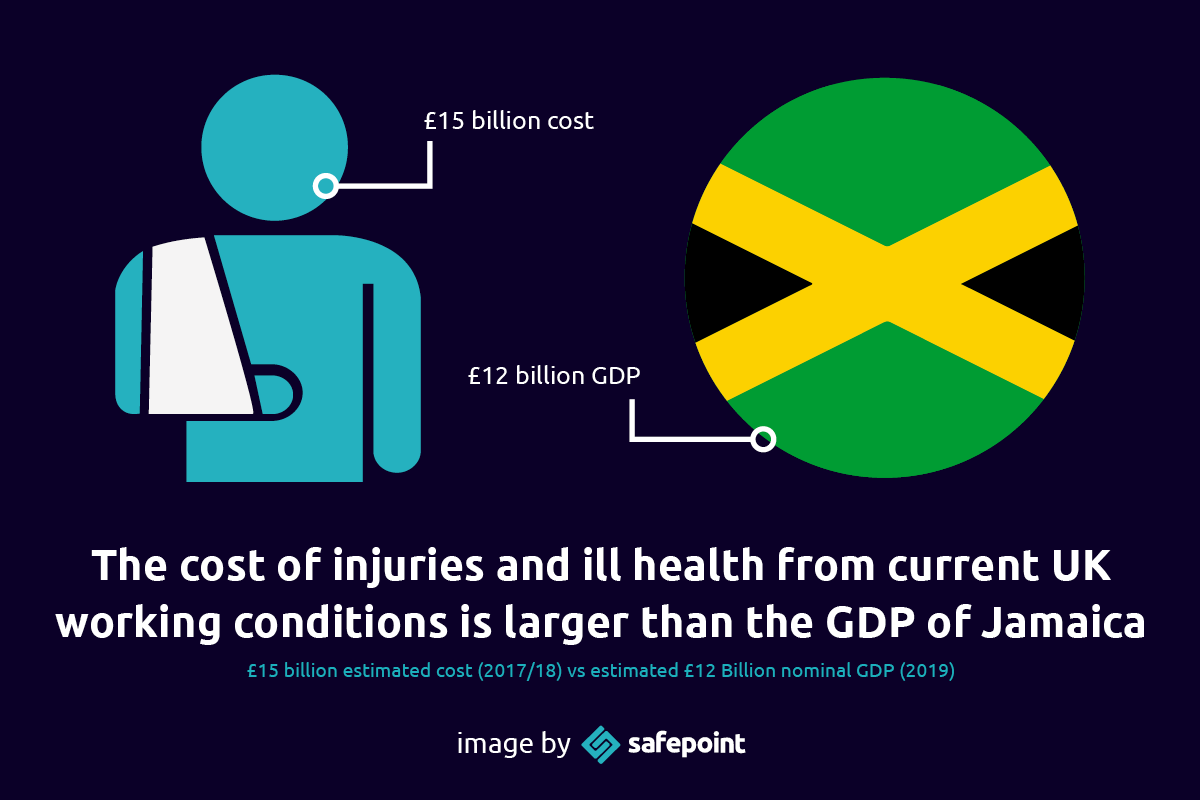Health and Safety Facts 2020
The Health and Safety Executive have released their latest annual report on workplace fatalities in the UK. Every year we create an infographic roundup of these statistics to help create a better understanding of these numbers and how they reflect the current safety climate.
As a company that helps protects workers, we think it’s important for companies to understand what’s at risk for the average staff member.
This year, we’ve not just focused on fatalities but we’ve also included statistics about physical and mental wellbeing across the UK industries.
Most dangerous industry by fatalities
In 2019/2020, construction made up 36% of all fatal injuries –making it the most dangerous sector this year. Last year’s most dangerous industry was agriculture, fishing and forestry which, whilst seeing a sharp drop in fatalities, is still incredibly high compared to UK averages.
Most common causes of death in UK workplaces
The causes of death for UK workers in 2019/2020 remain largely unchanged since the previous year, with just a 2% growth in ‘falling from a height’.
It is these innate dangers that showcase why the majority of deaths are clustered in the relatively small industries of construction, agriculture, fishing and forestry.
Working days lost to ill Health
Over 23 million working days were lost in 2018/2019 due to ill health and injury. That’s over 63,000 years of productivity!
Whilst fatal injuries are common in only a few industries in the UK, all industries lose workdays due to ill health. Consider how you can make your workplace safer by reading up on dynamic risk assessments.
Industries with the highest rate of stress, depression and anxiety
In the latest figures from the HSE, public admin/defence has the most cases of stress, depression and anxiety (at 2,500), followed by human health and social work (2,120) and then education (1,940).
With 54% of all working days lost being attributed to these factors, you should think seriously about your staff’s mental wellbeing.
For advice on how to manage stress in the workplace (particularly for those working alone or in high-risk roles), check out this guide.
The cost of injuries and ill health from current UK working conditions
The cost of injuries and ill health from current UK working conditions is estimated at £15 billion –this is more than the entire GDP of Jamaica!
Some injuries are unavoidable, but you can take precautions to make your workplace safer. Not only will you help protect your staff, but also lower your company’s costs through lost productivity.
Health and safety takeaways
Whether you work in high-risk industries such as construction, agriculture, fishing and forestry, high-stress roles such as public admin, defence or healthcare, or if you are simply worried about returning your staff to your workplace after lockdown, consider what you can do to improve your staff safety.
We always suggest that frequent communication between employers and staff is the best place to start improving physical and safety wellbeing. For more information on this, read our free guide on dynamic risk assessments.
Finally, if you employ staff who work alone or in dangerous areas, get in touch to find out more about Safepoint’s lone worker solutions. We provide innovative hardware and software that helps you monitor staff safety, wherever they are.
Want to know how to keep your team safe when they're out and about?
Notes: We are using the most up to date information available. We will update our information on non-fatal injuries when new statistics are released in November 2020.
As per normal HSE practices, deaths from disease (including COVID-19) are not included in our figures, however, the resulting slowdown of production may have affected overall numbers.






